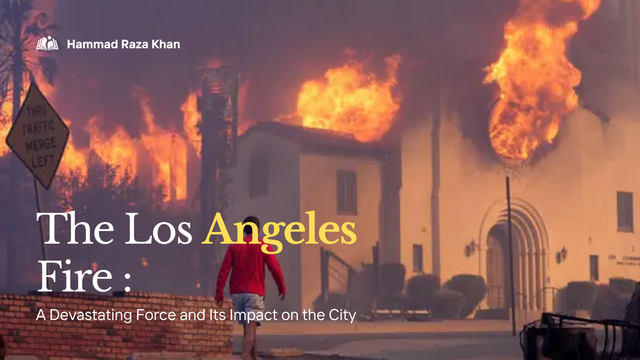The Los Angeles Fire: A Devastating Force and Its Impact on the City
The Los Angeles Fire: A Devastating Force and Its Impact on the City
Los Angeles, a sprawling metropolis known for its glamorous entertainment industry and vibrant culture, has long been vulnerable to one of nature’s most destructive forces: wildfires. In recent years, the city and surrounding areas have faced devastating fire seasons, with flames ravaging vast stretches of land, homes, and lives. These fires, often fueled by dry conditions, strong winds, and human activity, have had a lasting impact on both the physical environment and the communities that call Los Angeles home.
The Growing Threat of Wildfires
Wildfires are not a new phenomenon in California, but their frequency and intensity have increased in recent decades. Climate change has played a significant role in this trend, causing higher temperatures, prolonged droughts, and changing weather patterns. In addition, rapid urbanization has led to more homes being built in fire-prone areas, creating what experts refer to as the "wildland-urban interface," where human development and nature collide.
Southern California’s Mediterranean climate—with its hot, dry summers and mild, wet winters—creates the perfect conditions for wildfires to spread quickly. Vegetation like chaparral and dry grass, along with the Santa Ana winds, contribute to the spread of fires, sometimes consuming thousands of acres in mere hours.
The Impact on the City
The fires have affected Los Angeles in several profound ways. First and foremost, they pose a direct threat to the safety of residents. Evacuations are often necessary, with thousands of people forced to leave their homes to escape the advancing flames. For those in the affected areas, the emotional toll is immense—losing a home, a business, or even a loved one can be devastating.
In addition to the immediate danger to life and property, wildfires contribute to long-term environmental damage. Air quality in Los Angeles often deteriorates during fire season, with smoke from the fires spreading across the city. This leads to health problems, particularly for vulnerable populations such as children, the elderly, and those with respiratory conditions. The ash that settles on buildings and streets is a constant reminder of the destruction left behind.
The fires also wreak havoc on local wildlife. Many species of animals are displaced or killed in the flames, while others face the challenge of finding new habitats after their homes are destroyed. The destruction of natural landscapes also impacts biodiversity, with ecosystems taking years, or even decades, to recover.
The Economic Cost
Beyond the human and environmental toll, the economic impact of the Los Angeles fires is staggering. The cost of fighting the fires, including resources for firefighting teams, helicopters, and air tankers, can run into the millions of dollars. Additionally, businesses that are forced to close or lose inventory due to smoke damage can experience significant financial losses. The tourism industry, which is vital to the economy of Los Angeles, also suffers, as visitors may be deterred by the threat of fire and poor air quality.
Recovery efforts after a major fire are extensive, with millions spent on rebuilding infrastructure, offering financial aid to victims, and restoring public lands. Yet, despite these efforts, some communities struggle to fully rebuild, especially those that faced the worst destruction.
The Response and Solutions
In response to the growing threat of wildfires, Los Angeles and California have implemented various measures to mitigate the damage. Firefighters work tirelessly to control blazes, often aided by advanced technology such as drones and infrared sensors. Additionally, state and local governments are investing in fire prevention techniques, including controlled burns, vegetation management, and fire-resistant building materials.
There has also been a growing focus on public awareness and preparedness. Residents are encouraged to create defensible space around their homes, have emergency evacuation plans, and stay informed about fire conditions. Community groups and local organizations have also worked together to provide assistance to those affected by the fires, offering resources for evacuees and survivors.
However, the challenge remains complex, and climate change continues to intensify the risks. A concerted effort from both public and private sectors is essential to adapt to these changing conditions and to build a more resilient Los Angeles.
Looking Ahead
As Los Angeles continues to face the threat of wildfires, it’s crucial for both residents and authorities to work together to reduce risk and prepare for future disasters. While the fires are a devastating force, they also serve as a reminder of the importance of sustainable urban planning, climate action, and community solidarity.
In the coming years, it is likely that fire seasons will only grow more intense. But with greater awareness, improved prevention methods, and a united effort to protect both people and nature, Los Angeles can hope to weather the storm and rise from the ashes—stronger and more resilient than ever
